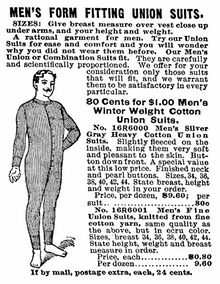
A union suit is a type of one-piece long underwear, most often associated with menswear in the late 19th and early 20th centuries.

A union suit is a type of one-piece long underwear, most often associated with menswear in the late 19th and early 20th centuries.
Created in Utica, New York, United States, it originated as women's wear during the 19th-century United States clothing reform efforts, as an alternative to constricting garments, and soon gained popularity among men as well. The first union suit was patented in 1868 as "emancipation union under flannel". [1] Traditionally made of red flannel with long arms and long legs, it buttoned up the front and had a button-up flap in the rear covering the buttocks (colloquially known as the "access hatch", "drop seat", "fireman's flap", "crap flap", and other names). Depending on the size, some union suits can have a dozen buttons on the front to be fastened through buttonholes from the neck down to the groin area.
The garment remained in common use in North America into the 20th century. As its popularity waned, it became chiefly working men's wear, increasingly replaced by two-piece long underwear, also known as "long johns". It was not uncommon until the mid-20th century for rural men to wear the same union suit continuously all week, or even all winter. Normally, no other type of underwear was worn with it. [2]
Union suits are still commercially available, but because of their long association with "old fashioned" usage, and presumed "unsophisticated" rural wearers, they are considered comical. The rear flap is also associated with humor, and in film and television the appearance of a union suit, viewed from behind, is a form of mild toilet humor.
In Britain, this garment has often been known as "combinations". When made from the traditional wool as recommended by Gustav Jäger, these are "woolly combinations"—sometimes abbreviated to "woolly coms". In the Western US, they are known as "long handles".
Union suits, especially the rear flap, are used for comedic effect in the 1999 movie adaptation of The Wild Wild West , Back to the Future Part III , the TV series Rugrats , and the Family Guy episode "No Meals on Wheels".
The union suit makes an appearance in Louisa May Alcott's book Eight Cousins , as a preferred alternative to corsetry under the name 'Liberty Suit'; and in Dashiell Hammett's Maltese Falcon, where private-eye Sam Spade "put(s) on a thin white union-suit". It also makes a presence in the 2003 film Cold Mountain . The union suit is referred to several times in Laura Ingalls Wilder's books about pioneer life during the mid-to-late 19th century in the United States, and in Harper Lee's book, To Kill A Mockingbird . In the expansion Undead Nightmare for the game Red Dead Redemption , the player begins play wearing a union suit and can continue to wear it throughout the game, if desired. The outfit is available in the prequel Red Dead Redemption 2. Dave Lister, a character from the British sci-fi sitcom Red Dwarf , can also be seen wearing one at various points throughout the series.
In the HBO series Deadwood (2004-2006), which won an Emmy for costume design, and the sequel film Deadwood: The Movie (2019), the character of Al Swearengen (played by Ian McShane) is frequently seen in a union suit. He wears only the union suit in private, and when getting dressed in the morning, dons a matching three-piece suit over it. Although the union suit is visible even with the vest, this appears to be adequate for daily wear. For more formal occasions, the character added a dress shirt over the union suit, and a cravat or bow tie.

An apron is a garment that is worn over other clothing to cover the front of the body. They may have several purposes, typically as a functional accessory that protects clothes and skin from stains and marks. However, other types of aprons may be worn as a decoration, for hygienic reasons, as part of a uniform, or as protection from certain dangers such as acid, allergens or excessive heat. It can also be used at work stations to hold extra tools and pieces or protect from dust and unwanted materials.

Pajamas (US) or pyjamas (Commonwealth), sometimes colloquially shortened to PJs, jammies, jim-jams, or in South Asia night suits, are several related types of clothing worn as nightwear or while lounging. Pajamas are soft garments derived from the Indian and Persian bottom-wear, the pyjamas. They originated in the Indian subcontinent and were adopted in the Western world as nightwear.
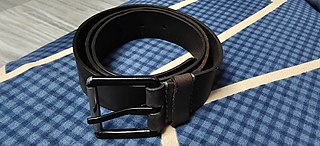
A belt is a flexible band or strap, typically made of leather, plastic, or heavy cloth, worn around the natural waist or near it. The ends of a belt are free; and a buckle forms the belt into a loop by securing one end to another part of the belt, at or near the other end. Often, the resulting loop is smaller than the hips. Belts come in many lengths because of the variety in waist sizes, and most belts can be adjusted at the buckle to suit the wearer's waist.
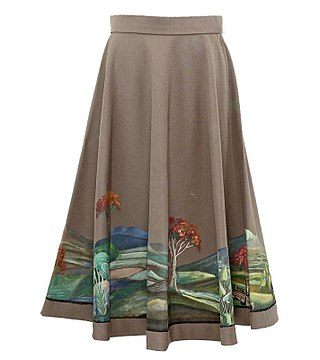
A skirt is the lower part of a dress or a separate outer garment that covers a person from the waist downwards.

A shirt is a cloth garment for the upper body.

A waistcoat, or vest, is a sleeveless upper-body garment. It is usually worn over a dress shirt and necktie and below a coat as a part of most men's formal wear. It is also sported as the third piece in the traditional three-piece male suit. Any given waistcoat can be simple or ornate, or for leisure or luxury. Historically, the waistcoat can be worn either in the place of, or underneath, a larger coat, dependent upon the weather, wearer, and setting.
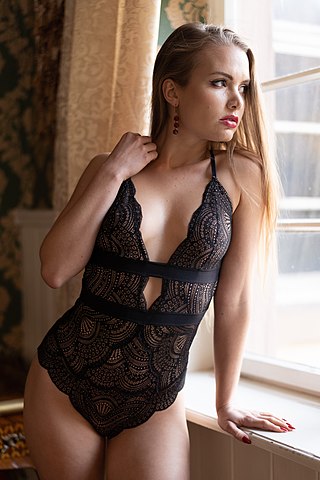
A bodysuit is a one-piece form-fitting or skin-tight garment that covers the torso and the crotch. The style of a basic bodysuit is similar to a one-piece swimsuit and a leotard, though the materials may vary. Thong or T-front thong bodysuits usually have the crotch opening moved up to the front to underbelly area to increase the wearer's comfort. A bodysuit may have sleeves and varying shoulder strap and collar styles. Bodysuits can be made from a number of fabrics, including cotton, lace, nylon, etc. In general, textile bodysuits include expandable fiber such as spandex for a better fit to the shape of the body.
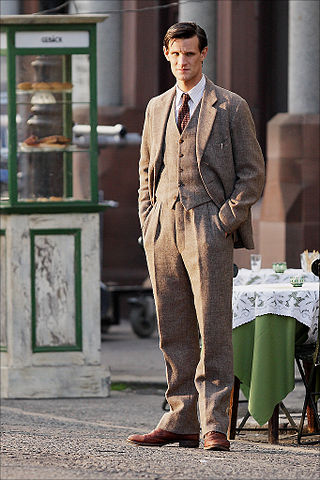
A suit, lounge suit, or business suit is a set of clothes comprising a suit jacket and trousers of identical textiles generally worn with a collared dress shirt, necktie, and dress shoes. A skirt suit is similar, but with a matching skirt instead of trousers. It is currently considered semi-formal wear or business wear in contemporary Western dress codes, however when the suit was originally developed it was considered an informal or more casual option compared to the prevailing clothing standards of aristocrats and businessmen. The lounge suit originated in 19th-century Britain as sportswear and British country clothing, which is why it was seen as more casual than citywear at that time, with the roots of the suit coming from early modern Western Europe formal court or military clothes. After replacing the black frock coat in the early 20th century as regular daywear, a sober one-coloured suit became known as a lounge suit.
A tailcoat is a knee-length coat characterised by a rear section of the skirt, with the front of the skirt cut away.
Long underwear, also called long johns or thermal underwear, is a style of two-piece underwear with long legs and long sleeves that is normally worn during cold weather. It is commonly worn by people under their clothes in cold countries.

Fashion in the 1890s in European and European-influenced countries is characterized by long elegant lines, tall collars, and the rise of sportswear. It was an era of great dress reforms led by the invention of the drop-frame safety bicycle, which allowed women the opportunity to ride bicycles more comfortably, and therefore, created the need for appropriate clothing.
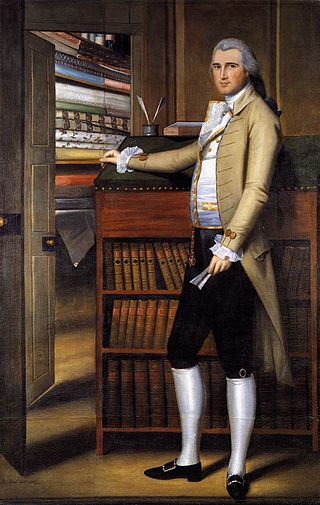
Breeches are an article of clothing covering the body from the waist down, with separate coverings for each leg, usually stopping just below the knee, though in some cases reaching to the ankles. Formerly a standard item of Western men's clothing, they had fallen out of use by the mid-19th century in favour of trousers.

Western wear is a category of men's and women's clothing which derives its unique style from the clothes worn in the 19th century Wild West. It ranges from accurate historical reproductions of American frontier clothing, to the stylized garments popularized by Western film and television or singing cowboys such as Gene Autry and Roy Rogers in the 1940s and 1950s. It continues to be a fashion choice in the West and Southwestern United States, as well as people associated with country music or Western lifestyles, for example the various Western or Regional Mexican music styles. Western wear typically incorporates one or more of the following, Western shirts with pearl snap fasteners and vaquero design accents, blue jeans, cowboy hat, a leather belt, and cowboy boots.

A teddy, also called a camiknicker, is a garment which covers the torso and crotch in the one garment. It is a similar style of garment to a one-piece swimsuit or bodysuit, but is typically looser and sheerer. The garment is put on by stepping into the leg holes and pulling the garment up to cover the torso. It may cover the whole of the torso or partially and may also cover the arms. They may open at the crotch so that the wearer may use the bathroom without taking it completely off. As an undergarment, it combines the functions of a camisole and panties, and may be preferred to avoid a visible panty line. It is also found as lingerie.
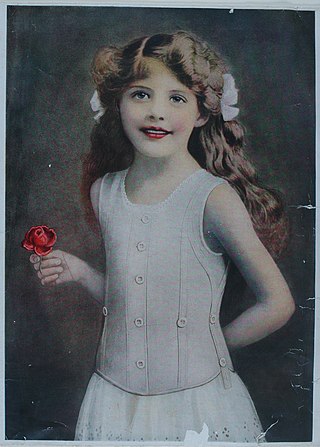
The liberty bodice, like the emancipation bodice or North American emancipation waist, was an undergarment for women and girls invented towards the end of the 19th century, as an alternative to a corset.

Fashion in the period 1900–1909 in the Western world continued the severe, long and elegant lines of the late 1890s. Tall, stiff collars characterize the period, as do women's broad hats and full "Gibson Girl" hairstyles. A new, columnar silhouette introduced by the couturiers of Paris late in the decade signaled the approaching abandonment of the corset as an indispensable garment.
A back closure is a means for fastening a garment at the rear, such as with a zipper, hooks-and-eyes or buttons. Back closures were once common on Western female clothing, but have recently become less so, especially on female casual and business attire. They continue, however, to be widely used in underwear, formal wear and specialized clothing. Back closures are also common in garments for infants and toddlers.
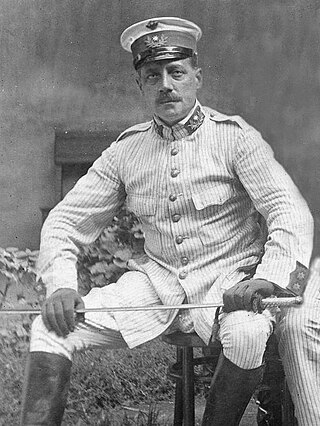
Rayadillo is a blue-and-white striped cotton or flannel material that was used to make the military uniforms worn by Spanish colonial soldiers from the mid 19th century until the early 20th century. It was commonly worn by soldiers posted in overseas Spanish tropical colonies and later, Spanish Morocco and Spanish Guinea.

Underwear, underclothing, or undergarments are items of clothing worn beneath outer clothes, usually in direct contact with the skin, although they may comprise more than a single layer. They serve to keep outer clothing from being soiled or damaged by bodily excretions, to lessen the friction of outerwear against the skin, to shape the body, and to provide concealment or support for parts of it. In cold weather, long underwear is sometimes worn to provide additional warmth. Special types of undergarments have religious significance. Some items of clothing are designed as undergarments, while others, such as T-shirts and certain types of shorts, are appropriate both as underwear and outerwear. If made of suitable material or textile, some underwear can serve as nightwear or swimwear, and some undergarments are intended for sexual attraction or visual appeal.
A man's suit of clothes, in the sense of a lounge or business or office suit, is a set of garments which are crafted from the same cloth. This article discusses the history of the lounge suit, often called a business suit when featuring dark colors and a conservative cut.